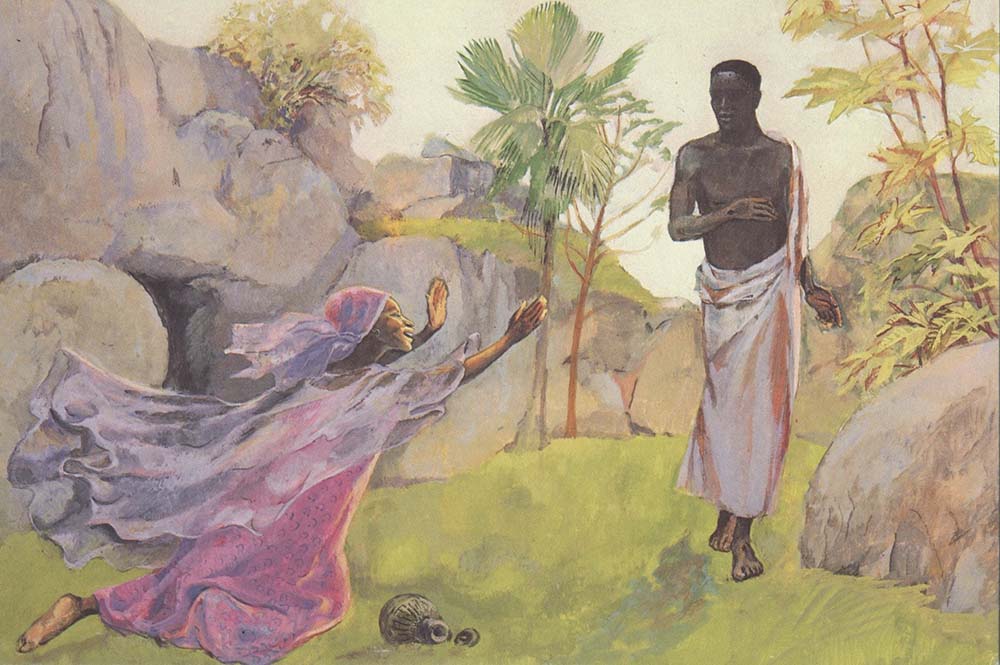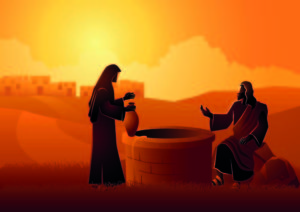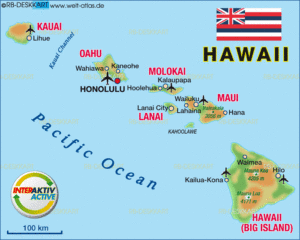Today we celebrate the Feast of Mary Magdalene, Apostle to the Apostles
While weeping in the darkness of early morning, Mary Magdalene asks the gardener, who is really Jesus, where Jesus’ body has been taken. She wants to fix this situation and put him back in this tomb in the rock. But she soon realizes she cannot put Christ back in a box because everything is changed forever.
“Mary,” says Jesus, “Rabbouni,” Mary Magdalene answers back. Jesus recognizes her as a person by saying her name. I think this exchange was very tender between them. “Mary,” he says, recognizing her as his friend and his true disciple.
And Mary knows her teacher in this moment. I often wonder if it was his face or the sound of his voice that caused her to know who he was. She no longer wants to put him back in the tomb because everything is changed forever.
But this is a messy situation. She must have thought, “Who is going to believe me that this has happened? This is going to be confusing and uncomfortable and maybe the followers will think I am crazy. Then Jesus tells her to go to the brothers and sisters who share this amazing God, that he is in fact alive.
Forgetting her many worries, Mary does this. She finds Jesus’ followers and then says those oh-so-famous words, “I have seen the Lord.”
In doing so, Mary Magdalene preached the first sermon of our Risen Lord. “I have seen the Lord.” This sentence has resounded about the globe, orbiting, reverberating and echoing around and through the earth, our island home. Mary Magdalene’s words of the resurrection have come to rest in the hearts of the saints in Christian history. Those same saints passed on this Good News, this greatest story ever told, for more than 2000 years.
She is the first evangelist, the first reporter of the Good News, news that continues to be told by us, the faithful. We are in this place of Christian worship because of what happened on that fateful day in the garden when everything changed forever.
She was Jesus’ first prophet announcing God’s measureless love in the form of Christ himself.
Magdalena was a teacher in the tradition of Jesus. She shared the danger he experienced, too. Remember, the Magdalene went to Galilee to share the Good News even though she was in great danger. It was a risk of deadly proportions. The eyes of Rome were on her and Jesus’ friends, the would-be insurrectionists, who might instigate a coup. And make no mistake, women in first century Palestine felt the bloody spike of Rome; women were crucified, too.
Yet, she traveled and did what Jesus asked her to do. Jesus’ resurrection changed the world forever, and the Magdalene was his first eyewitness, a woman who bravely preached the first word of the gospel, the Good News, “I have seen the Lord.” Come and see” that everything is changed forever.
Mary taught us to go out and share the Good News that Jesus has conquered death once and for all. We are called to be disciples of Christ in our communities by sharing the Good News, by our words and conduct, by our hearts and by our hands. We are called to tell others that Jesus, who lived as a man, understands our pain as well as our joys.
We are called to report that we will meet Jesus again. We will see Jesus again in that heavenly country where all the saints are gathered, because everything has changed forever!
Let us give thanks to our Lord forever! Alleluia!
Artwork: Easter – Christ appears to Mary, from Art in the Christian Tradition, a project of the Vanderbilt Divinity Library, Nashville, TN.





